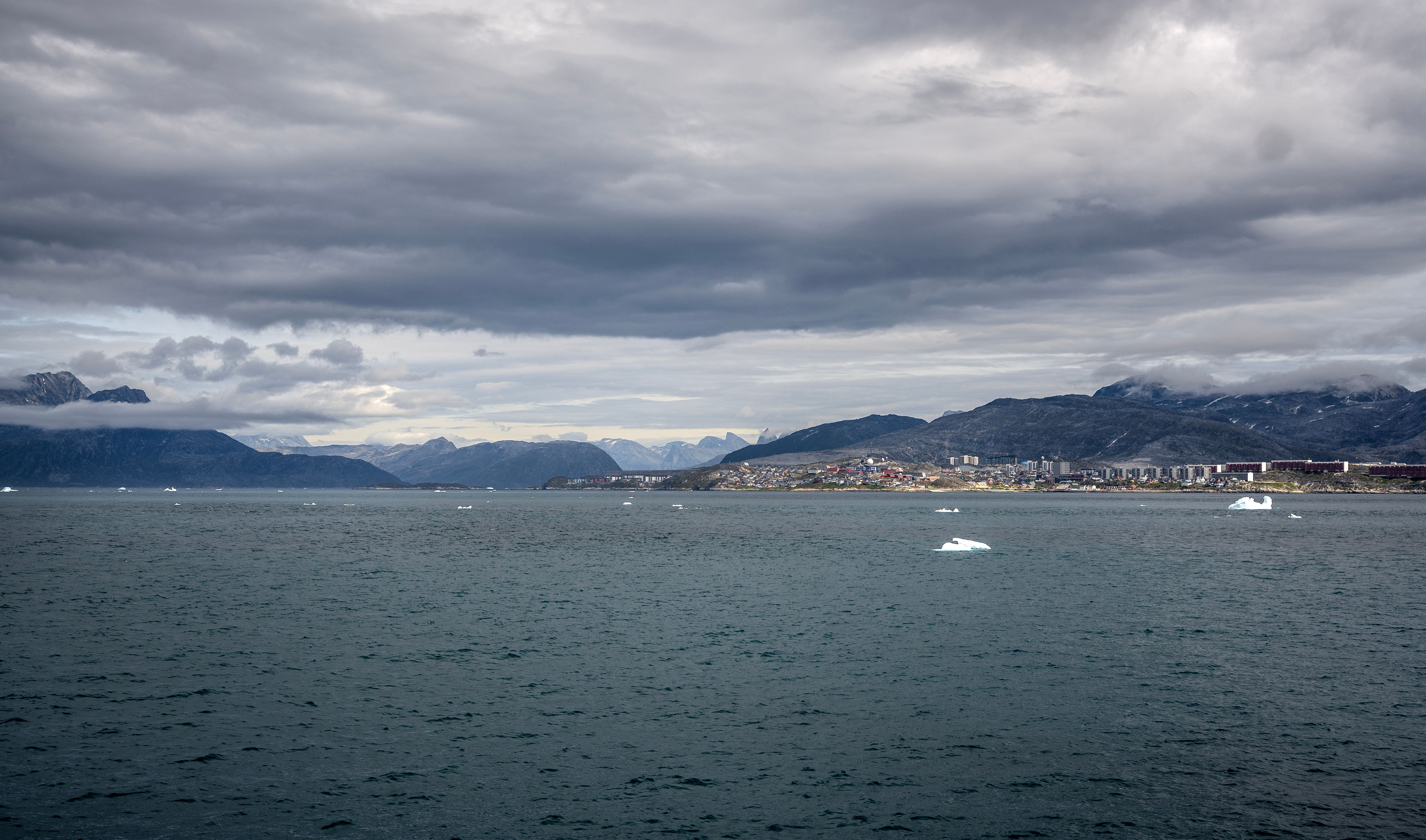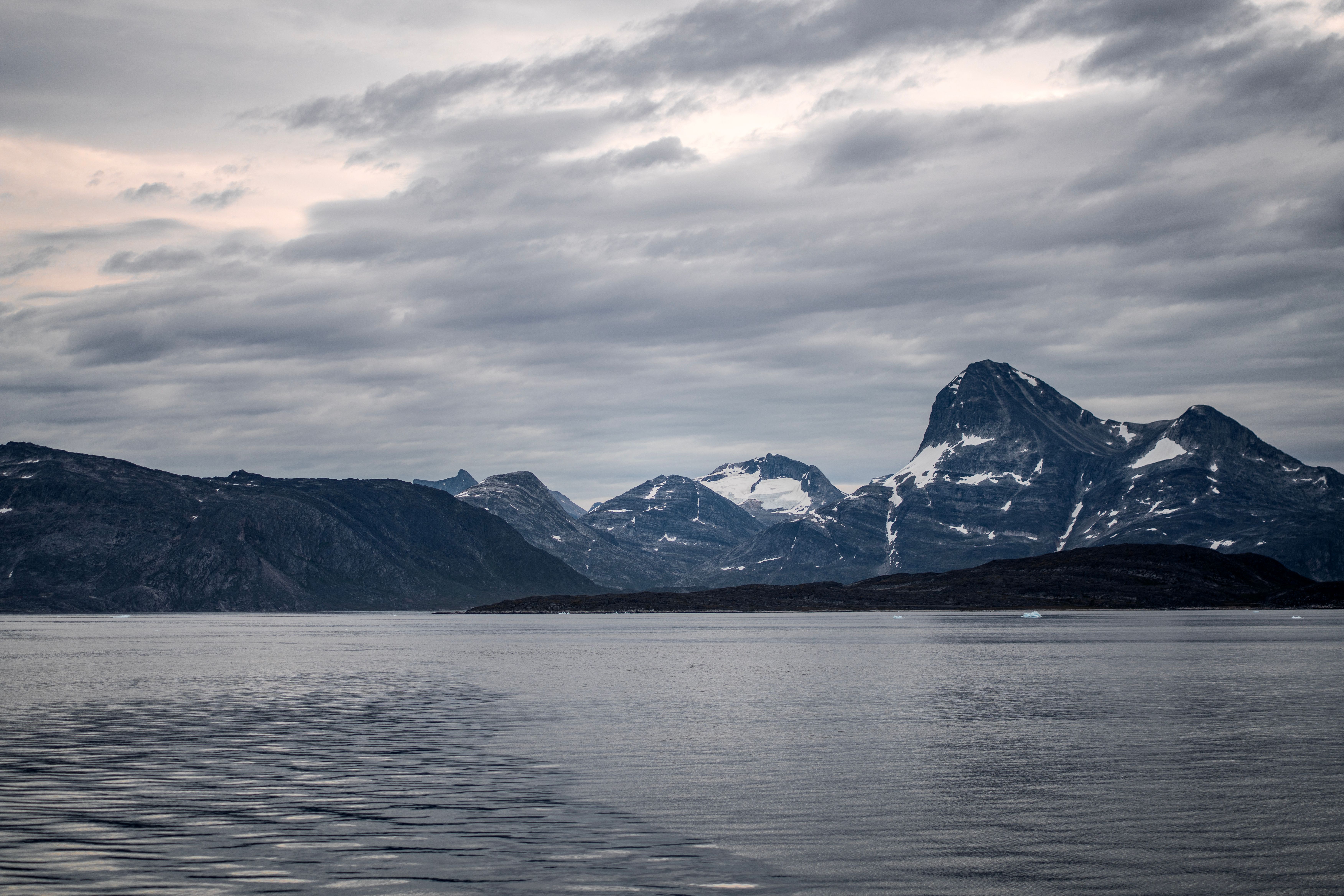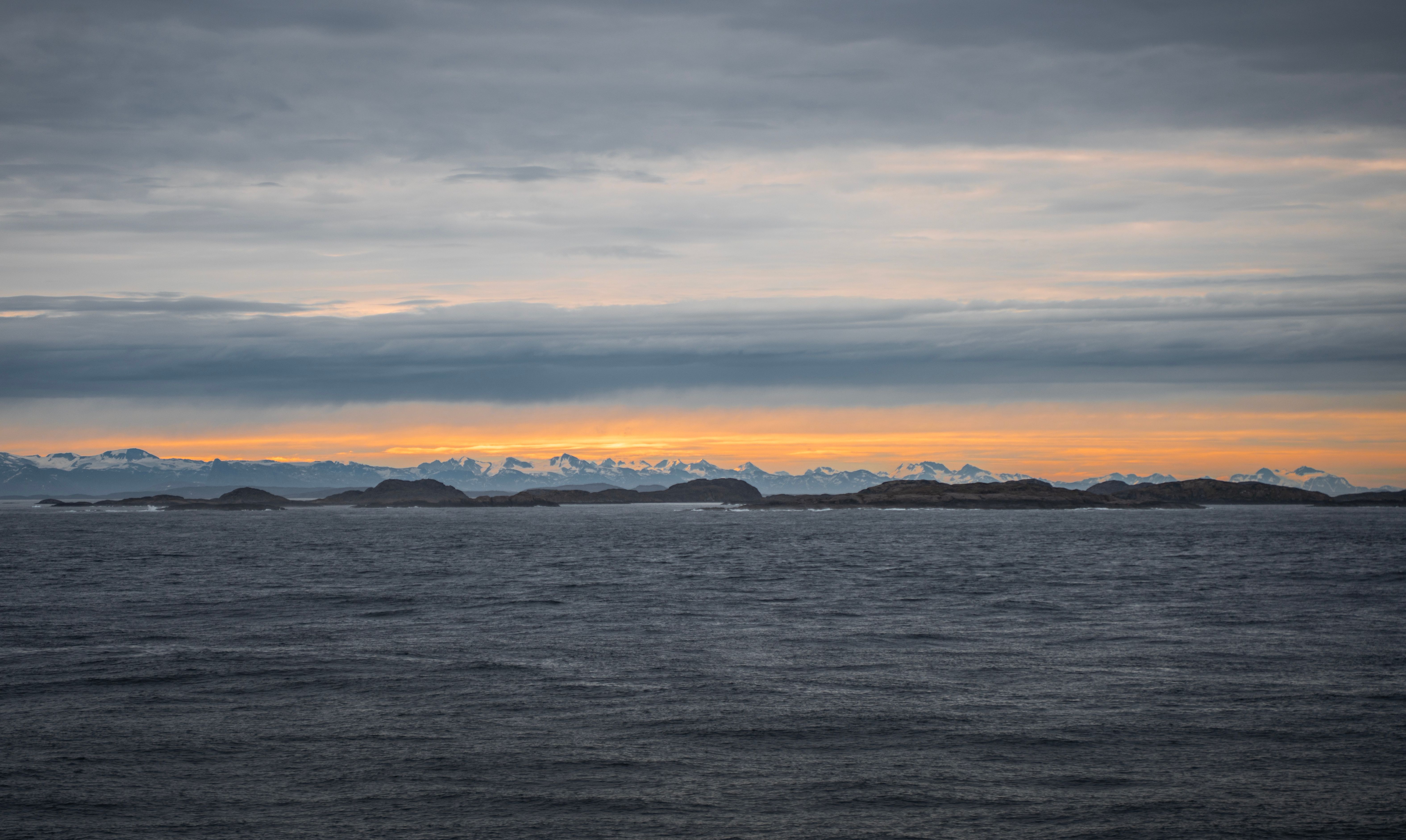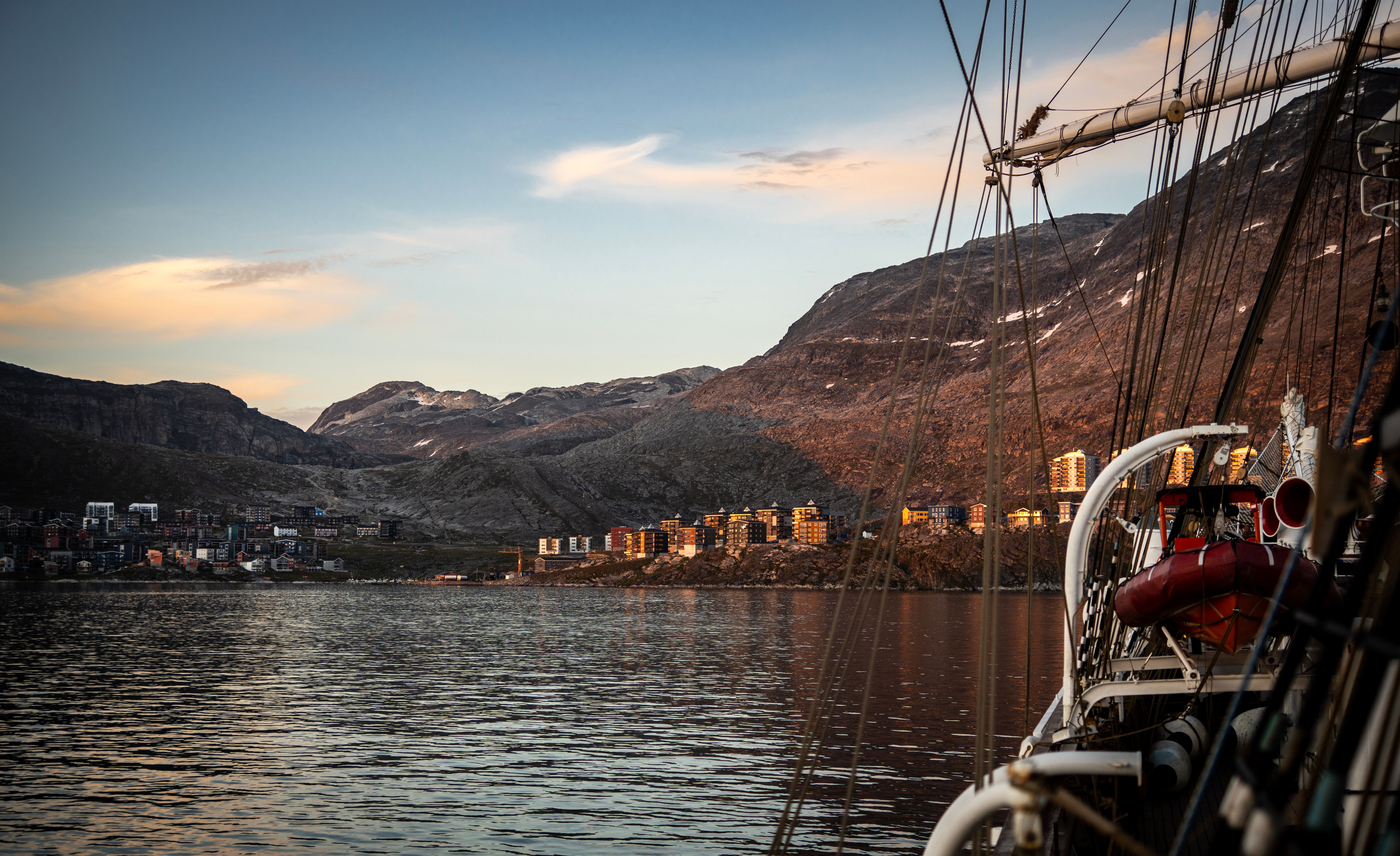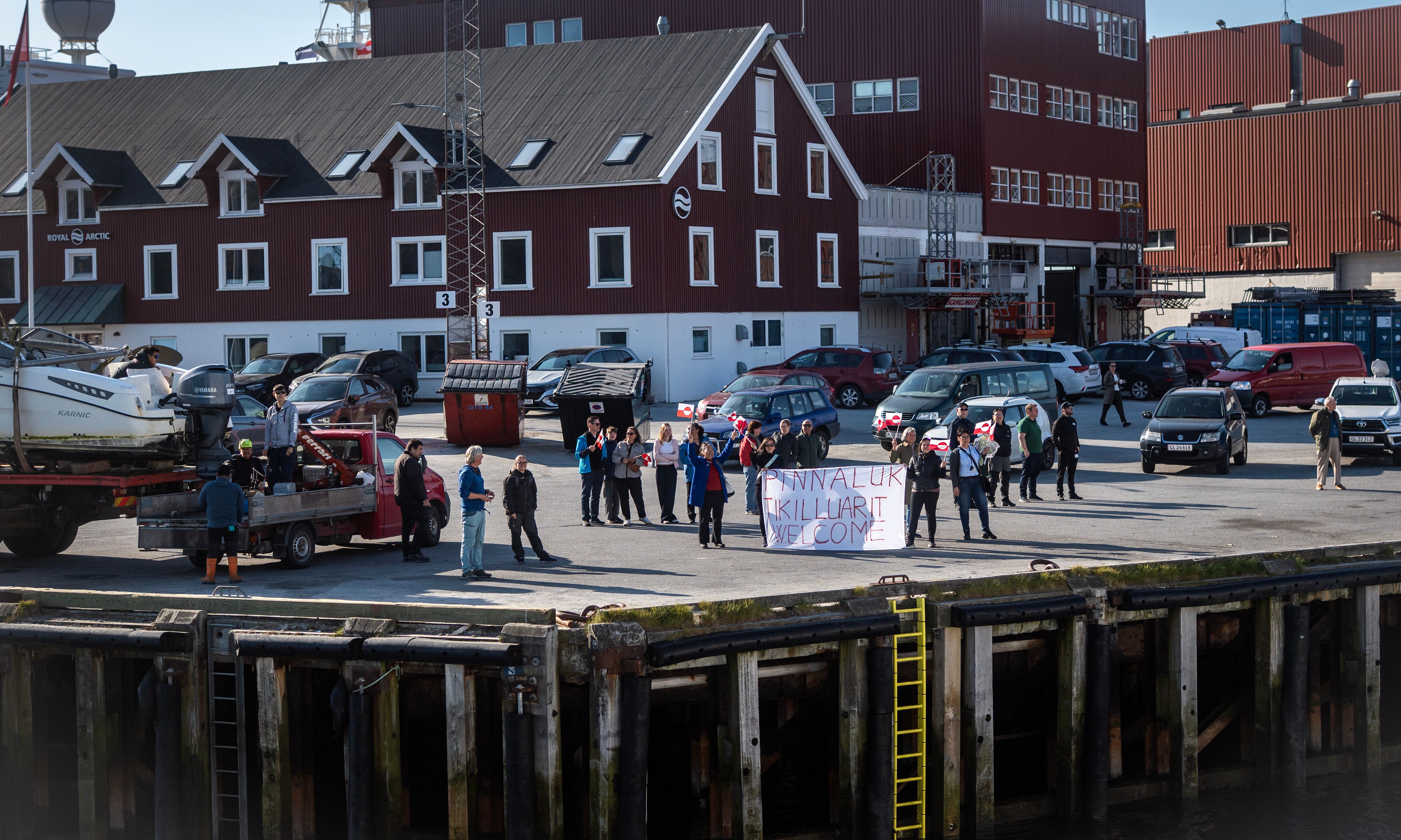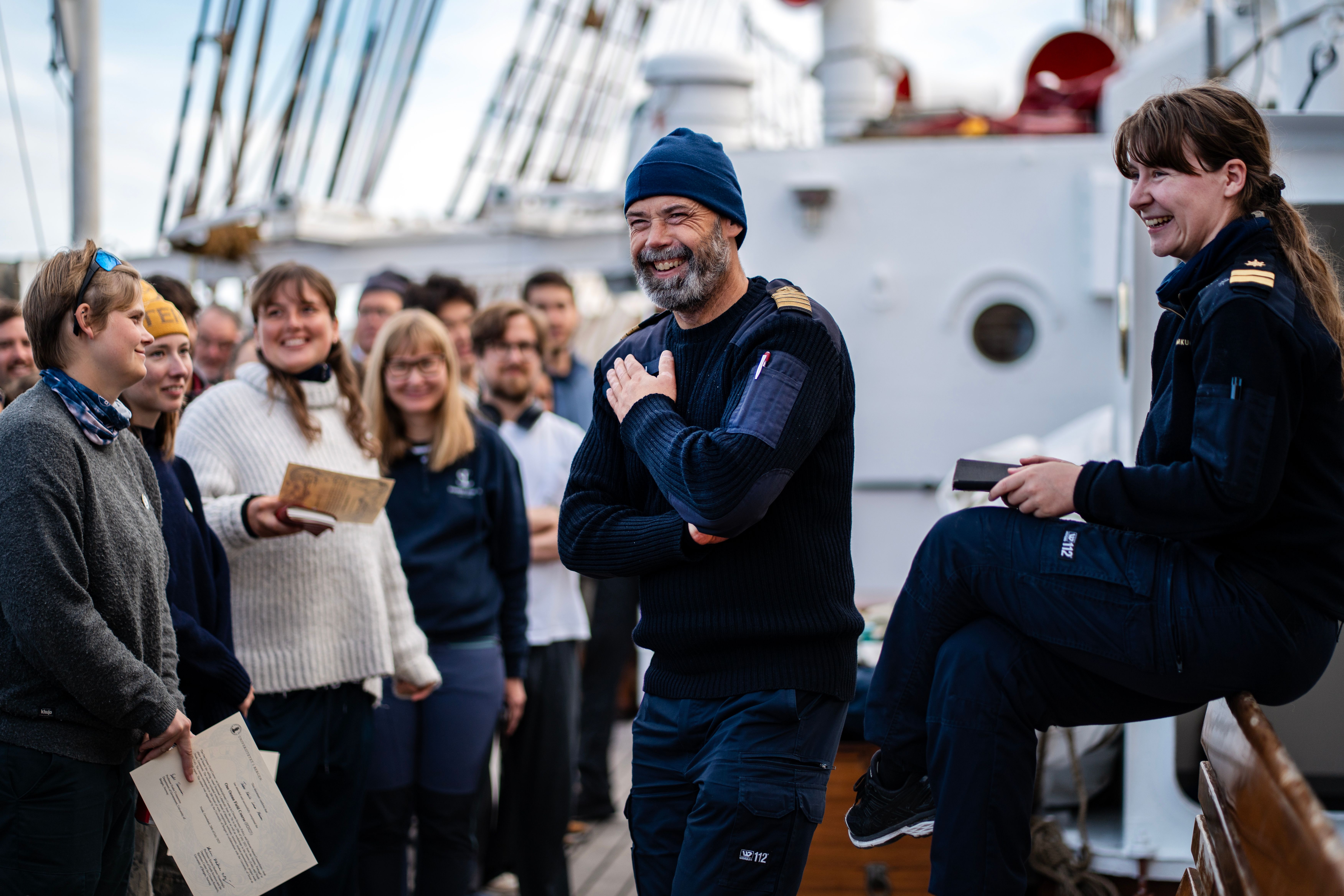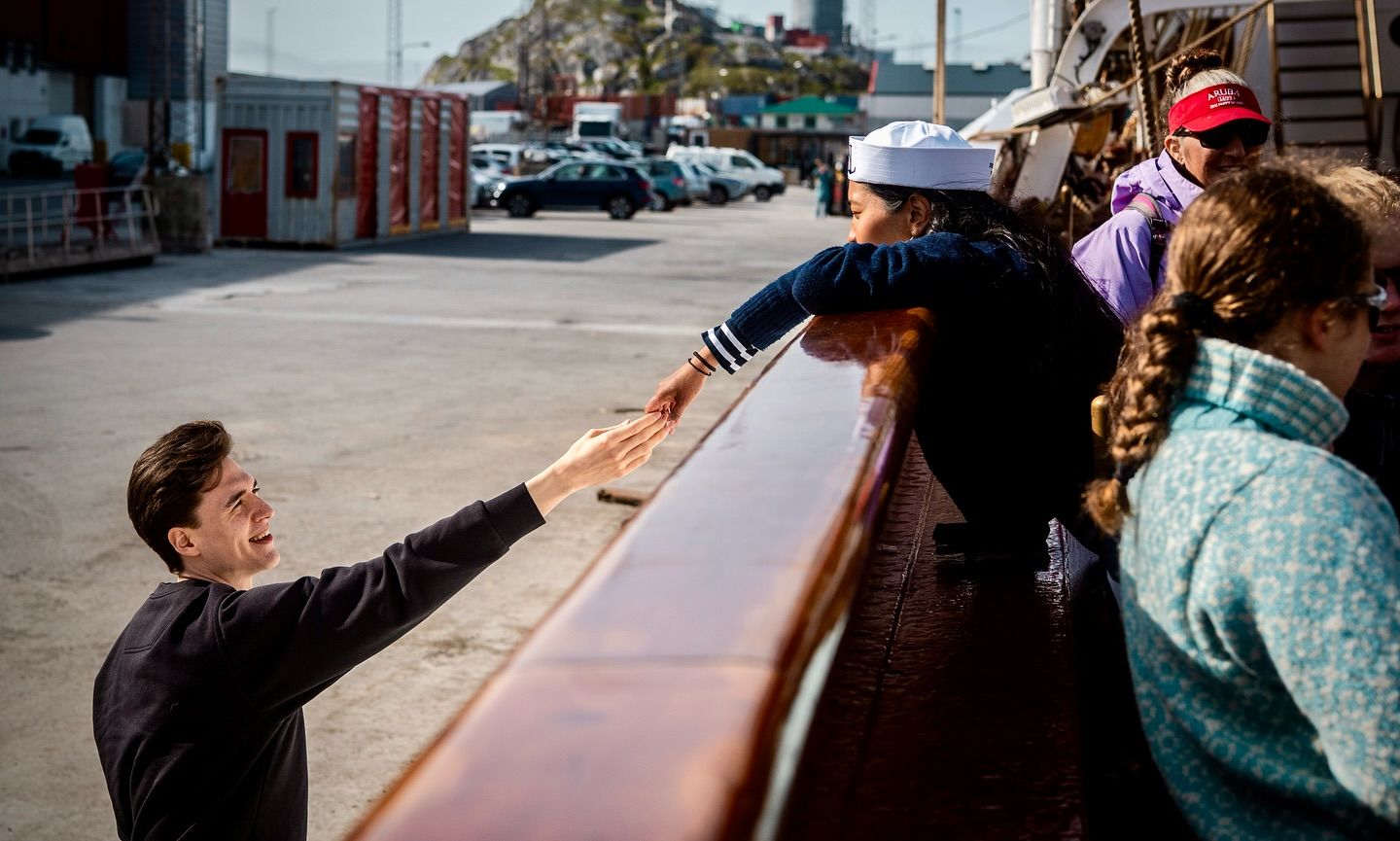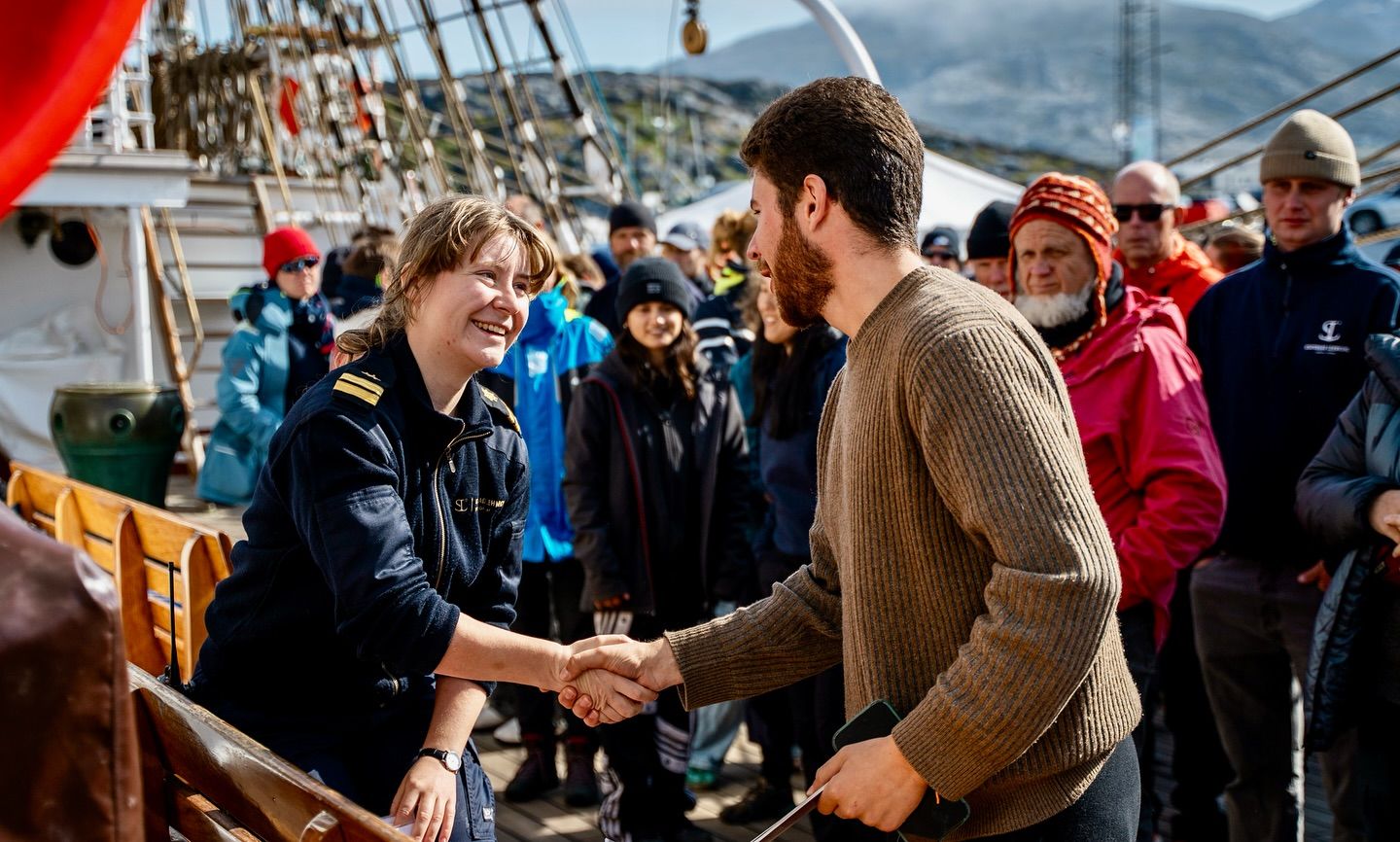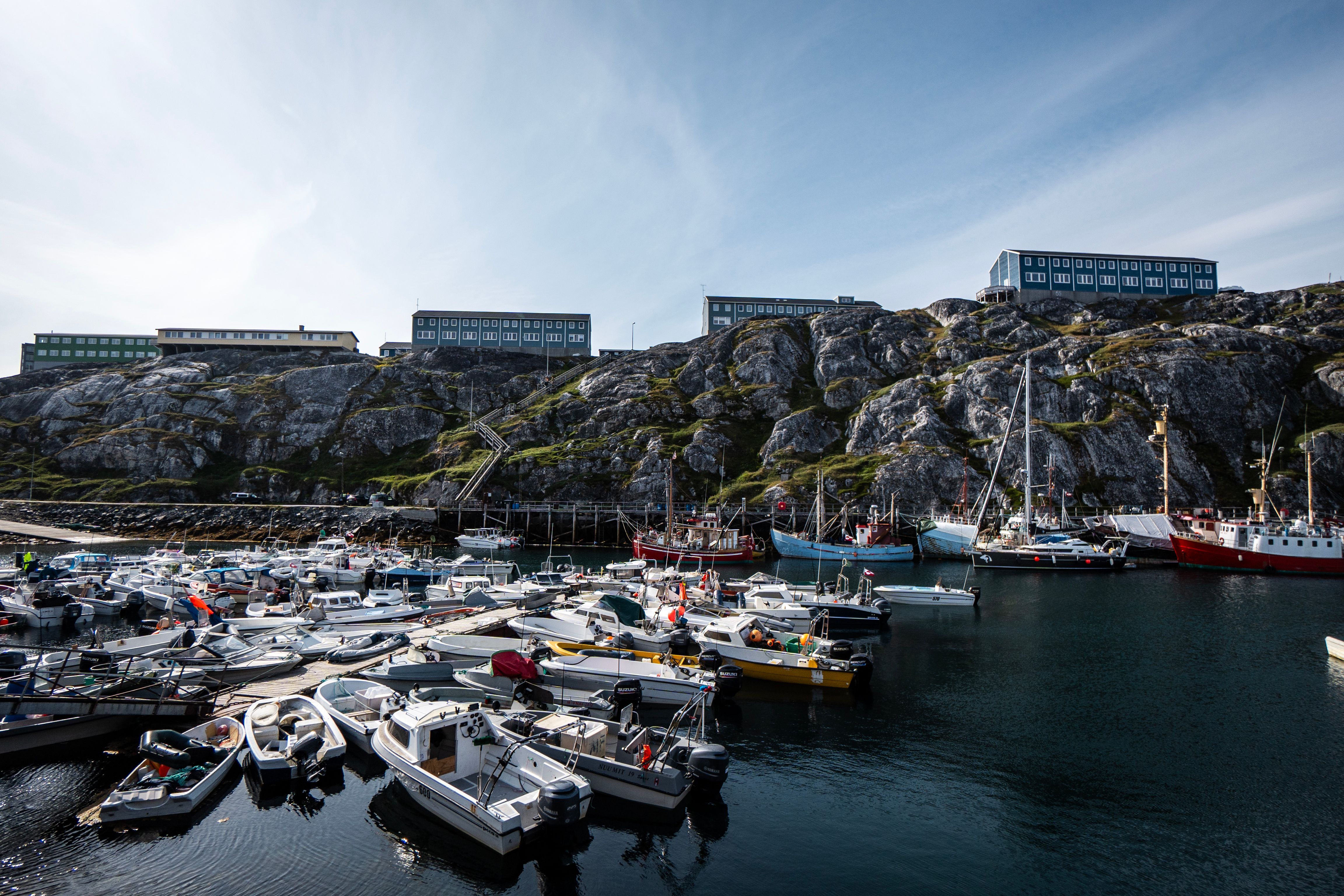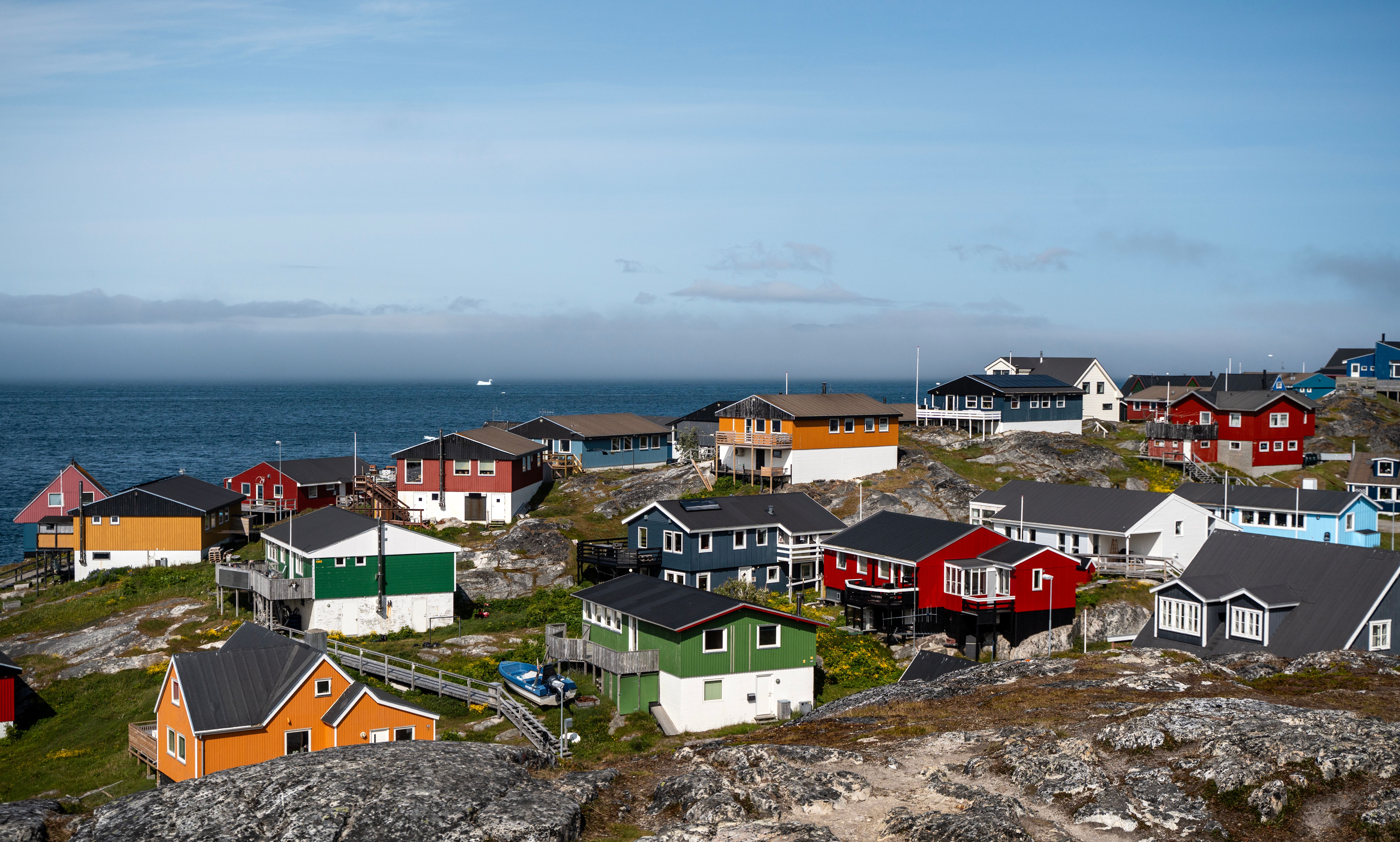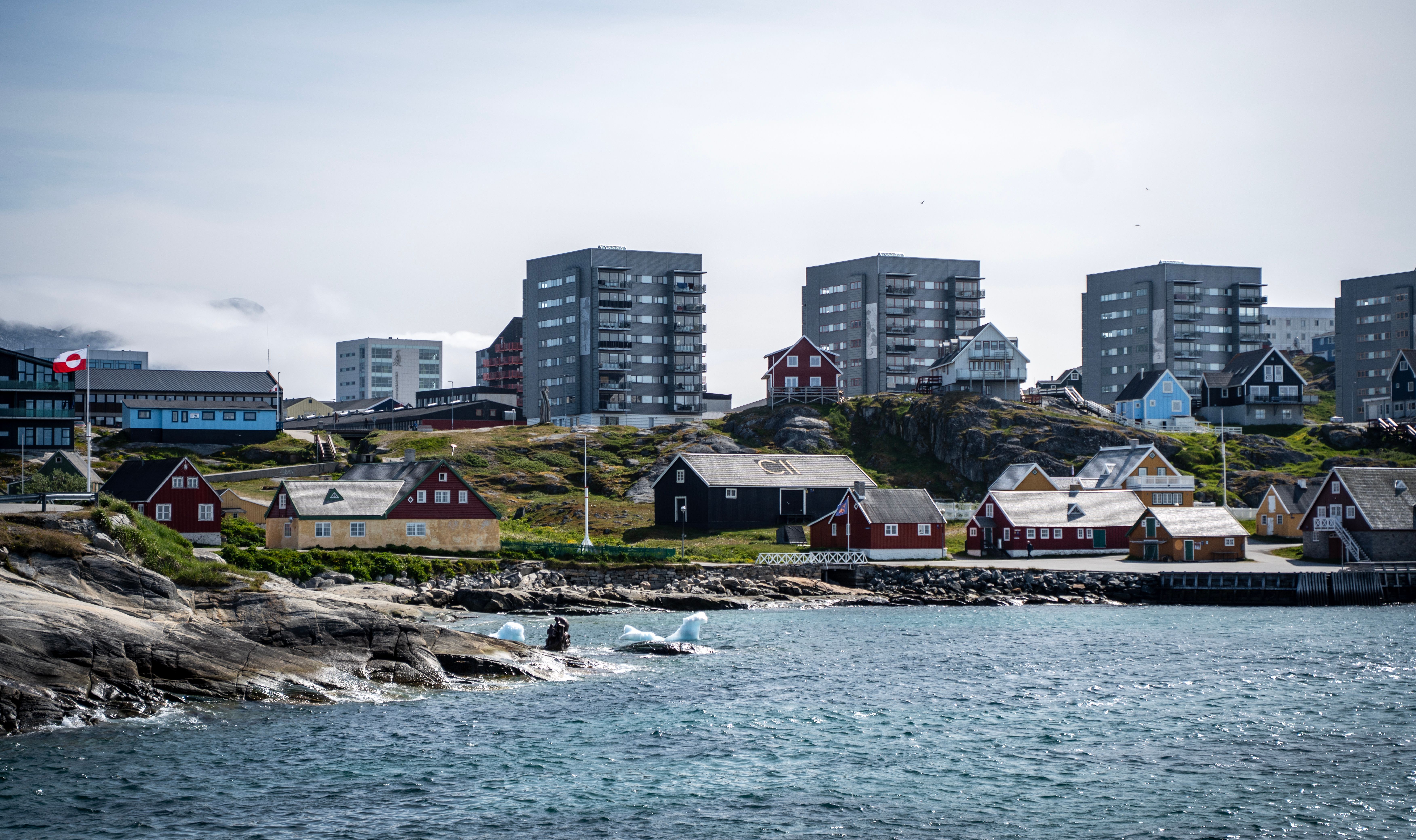Nuuk, Greenland: After four months at sea, Statsraad Lehmkuhl has arrived in Nuuk as part of the One Ocean Expedition 2025–2026. On August 5, the ship will embark on the most challenging leg in its more than 100-year history – a historic education and research voyage through the Northwest Passage, made possible by climate change and melting ice.
Climate change and rising temperatures have opened up the passage for summer sailing – a route once blocked by ice. At the same time, melting sea ice and unpredictable conditions pose the greatest risks during the two-month voyage.
- “This is without a doubt the most demanding voyage we have ever planned. We have spent significant resources over several years to prepare both the ship and the crew, and to meet the formal requirements for polar waters,” says Haakon Vatle, CEO of the Statsraad Lehmkuhl Foundation and Expedition Leader of the One Ocean Expedition.

International students and research in the Arctic
At the same time, the voyage is considered one of the most important in the ship’s history. UiT The Arctic University of Norway has chartered the vessel for the entire Northwest Passage and brings students and researchers from across the globe to gain firsthand knowledge of some of the most climate-stressed areas on the planet.
Along the way, students will combine traditional seamanship training and ship operations with academic learning and practical fieldwork. Researchers will map, among other things, sea ice conditions, biodiversity, micro plastics, and how pollution affects Arctic ecosystems.

- “The participants will build an international network that will undoubtedly contribute to positive developments in the Arctic. These are the researchers and decision-makers of the future, and for UiT this voyage is a long-term investment ahead of the International Polar Year in 2032/33.”
Learning from Indigenous knowledge
Vatle also emphasizes that students will learn from Indigenous knowledge in the region:
- “Several representatives from Inuit communities are participating in the voyage, and UiT is also including Sámi representation. This provides unique insights that will be valuable for everyone on board,” says Vatle.
Route and duration
The voyage through the North West Passage departs from Nuuk on August 5 and lasts for two months, with planned stops in Pond Inlet, Gjoa Haven, and Cambridge Bay, before arriving in Whittier, Alaska, on October 4. It passes through some of the most remote and least explored waters in the world.

Preparing for polar waters
Preparations for sailing in Arctic waters have been extensive. Statsraad Lehmkuhl is certified under the Polar Code, has undergone major technical upgrades worth millions of kroner, and is equipped with new safety gear.
The crew has received training in polar operations and is well prepared for challenges such as drifting ice and the long distance to assistance and infrastructure. There has also been close dialogue with both Norwegian and Canadian authorities throughout the planning phase.
- “The ship is certified to sail in open Arctic waters, but not in ice-covered areas. Historical data shows the route has been ice-free during this time in nine of the last ten years. In the one year with ice, we would have had to wait a week – which we have accounted for in our voyage plan,” says Vatle.

Safety committee and experienced ice pilot
The expedition has its own safety committee, consisting of experts from One Ocean Expedition's partner organizations, including Haukeland University Hospital, research institutions, and insurance providers. The committee has been involved throughout the planning process and has worked continuously on risk assessments and safety procedures. All emergency resources have been mapped, and contingency plans are in place.
On board is also one of Canada's most experienced ice pilots. He has contributed to the planning and will accompany the ship through the entire passage. His close contact with local Inuit communities will also be an important resource for ongoing assessments during the voyage.
Safety comes first
Despite extensive preparations, Vatle is clear that nature will always have the final word.
- “We have never been better prepared for a voyage. But ultimately, nature decides. If ice conditions become more demanding than what we are certified for, we will abort the voyage. Safety always comes first", says Expedition Leader Haakon Vatle.

In the wake of Roald Amundsen
Norwegian polar explorer Roald Amundsen was the first to navigate the Northwest Passage, sailing the small vessel Gjøa from 1903 to 1906. He spent two winters on the island of Qikiqtaq in Nunavut – now named Gjøa Haven, one of Statsraad Lehmkuhl’s planned stops.
Now, more than a century later, Statsraad Lehmkuhl is set to become one of the largest tall ships ever to attempt the same route.


